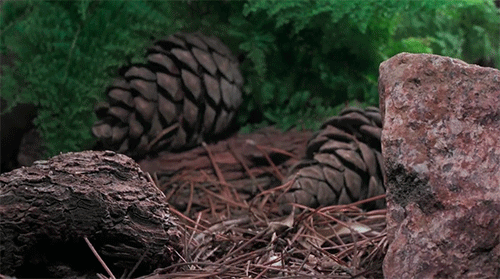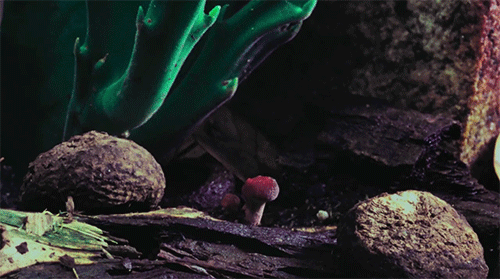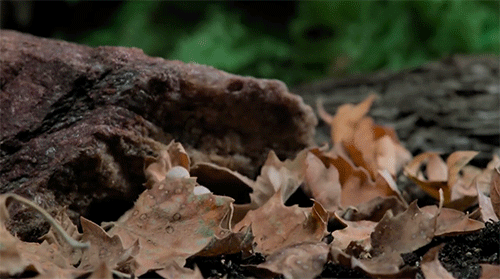Photo



Neon Genesis Evangelion S01E16 ‘Splitting of the Breast’ (Hideaki Anno, 1996)
82K notes
·
View notes
Note
hey ✨💗💝 do you have any favourite books that you could recommend? non-fiction and/or fiction :) have an amazing day 🥺💖
I answered an ask a few months ago about my fav books so I’ll paste the list here <333
normal people - sally Rooney
the catcher in the rye - jd Salinger
Rebecca - Daphne du Maurier
the honjin murders - seishi yokomizo
frankenstein - mary Shelley
murder on the orient express and death on the nile - Agatha christie (or just any of her books lol)
Jane Eyre - Charlotte Bronte
all the light we cannot see - Anthony Doerr
the vanity fair diaries - Tina brown
these two are plays but I love them:
a streetcar named desire - Tennessee Williams
waiting for Godot - Samuel Beckett
13 notes
·
View notes
Video
This how @y9amusic_ke and i be vibing to our music now and in the future. All songs can be found on all platforms Songs in order are Bamba A Number - Y9a & CHozenAfitra Win Now - Y9a & CHozenAfitra Silhouette Jams - Y9a & CHozenAfitra with @kitulu.lee Ancestors - Y9a & CHozenAfitra, karuga(@kj.karuga) and waves(@kitulu.lee) Chapa Kazi - Y9a & CHozenAfitra with Hush (@_ngare) Extra - Y9a & CHozenAfitra with Karuga(@kj.karuga) Weka Tot - Y9a & CHozenAfitra https://www.instagram.com/p/CJvitvcpefR/?igshid=ayat79onhli
0 notes
Video
Mad love for the Broski @y9amusic_ke, having fun ready to give the fans Mad Tunes and Vibes this year. Check out 'Bamba A Number' on youtube, link to all platforms in the Bio, subscribe and live life. 🌑🌊 (at Nairobi) https://www.instagram.com/p/CJs9fVmJEaP/?igshid=8rjiikmvamhs
0 notes
Photo










The Kikuyu are the largest ethnic group in Kenya. They speak the Bantu Gĩkũyũ language as a mother tongue. The term Kikuyu is the Swahili form of the proper name and pronunciation of Gĩkũyũ , although group members refer to themselves as the Agĩkũyũ. Gĩkũyũ literally means a huge sycamore tree and Agĩkũyũ thus literally refers to the children of the huge sycamore
Origin
Mythically, the nation of the Agĩkũyũ came from two original parents who were created by God, namely Gĩkũyũ andMũmbi. The word Gĩkũyũ means ‘a huge sycomore tree’. Ngai refers to the creator who happens to be a life companion to the sycamore, the sacred tree from which the nation originated.The Kikuyu are of Bantu origin.They constitute the single largest ethnic group in Kenya, and are concentrated in the vicinity of Mount Kenya. The exact place that the Kikuyu’s ancestors migrated from after the initial Bantu expansion from West Africa is uncertain. Some authorities suggest that they arrived in their present Mount Kenya area of habitation from earlier settlements further to the north and east,while others argue that the Kikuyu, along with their closely related Eastern Bantu neighbors the Embu, Meru, Mbeere, andKamba moved into Kenya from points further north
The nation and its pursuits
Until the arrival of Europeans, the Agĩkũyũ preserved geographic and political power from almost all external influence for many generations; they had never been subdued.Just before the arrival of the British, Arabs were involved in slave trade and their caravans passed at the southern edges of the Agĩkũyũ nation. Slavery as an institution did not exist amongst the Agĩkũyũ, nor did they make raids for the capture of slaves.The Arabs who tried to venture into Agĩkũyũland met instant death. Relying on a combination of land purchases, blood-brotherhood (partnerships), intermarriage with other people, and their adoption and absorption, the Agĩkũyũ were in a constant state of territorial expansion.Economically, the Agĩkũyũ were great farmers and shrewd business men. Besides farming and business, the Agĩkũyũ were involved in small scale industries with professions such as bridge building,string making,wire drawing,and iron chain making.The Agĩkũyũ had a great sense of justice(kihooto).
Social and political life
The Agĩkũyũ nation was divided into 9 clans. The members of each clan had a maternal blood tie in common, but were not restricted to any particular geographical area, they lived side by side. Some clans had a recognised leader, others did not.[18] However, in either case, real political power was exercised by the ruling council of elders, lead by a headman.
Spirituality and religion
Ngai – The Supreme Creator
The Gĩkũyũ were – and still are – monotheists believing in an omnipotent God whom they refer to as Ngai. Both the Gĩkũyũ, Embu, and Kamba use this name. Ngai was also known as Mũrungu by the Meru and Embu tribes, or Mũlungu (a variant of a word meaning God which is found as far south as the Zambezi of Zambia). The title Mwathani or Mwathi (the greatest ruler) comes from the word gwatha meaning to rule or reign with authority, was and is still used. All sacrifices to Ngai were performed under a sycamore tree (Mũkũyũ) and if one was not available, a fig tree (Mũgumo) would be used. The olive tree (Mũtamaiyũ) was a sacred tree for women.[19]
Philosophy of the Traditional Kikuyu Religion
The cardinal points in this Traditional Gĩkũyũ Religion Philosophy were squarely based on the general Bantu peoples thought as follows:
The universe is composed of interacting and interconnected forces whose manifestation is the physical things we see, including ourselves and those we don’t see.
All those forces (things) in the universe came from God who, from the beginning of time, have had the vital divine force of creation within himself.
Everything created by God retains a bond from God (Creator) to the created.
The first humans who were created by God have the strongest vital force because they got it directly from God.
Because these first humans sit just below God in power, they are almost like Gods or even can be Gods.
The current parent of an individual is the link to God through the immediate dead and through ancestors.
On Earth, humans have the highest quantity of vital force.
All the other things (forces) on Earth were created to enable human vital force (being) become stronger.
All things have vital force but some objects, plants and animals have higher vital force than others.
A human can use an animal to symbolize the level of his vital force compared to other humans.
There is a specific point within every physical manifestation (thing) of vital force where most that force is concentrated.
A human can easily manipulate things to his advantage or to their detriment by identifying this point of concentration of vital force. There are human beings who have more knowledge of these forces and can manipulate them at will usually by invoking higher forces to assist.
Higher forces are invoked by humans using lower forces (animal or plant sacrifice) as intermediaries. To approach higher forces directly is thahu (abomination which leads to a curse).
The human society has some few elite people very skilled in the art of manipulating forces to strengthen a human(s) force or diminish it, strengthen any force below human force or diminish it.
The leader of a human society is the one possessing the highest vital force as at that time or the one closest to God or both. Since the leader of this human society has the highest vital force and hence closer to God than any other person, he should be able to nourish the rest of the people by linking them to the ultimate God and by being able to command lower forces to act in such a way so as to reinforce the other humans vital force.
The life force of a dead ancestor can come back to life through the act of birth of a new child, especially when the child is named after the departed ancestor and all is seen to be well.
Gĩkũyũ nation, being of Bantu family held a belief in the interconnection of everything in the universe. To the Gĩkũyũ people, everything we see had an inner spiritual force and the most sacred though unspoken ontology was being is force.This spiritual vital force originated from God, who had the power to create or destroy that life force. To the Gĩkũyũ people, God was the supreme being in the universe and the giver(Mũgai/Ngai) of this life force to everything that exists. Gĩkũyũ people also believed that everything God created had a vital inner force and a connection bond to Him by the mere fact that he created that thing and gave it that inner force that makes it be and be manifested physically.To the Agĩkũyũ, God had this life force within himself hence He was the ultimate owner and ruler of everything in the universe. The latter was the ultimate conception of God among the Gĩkũyũ people hence the name Mũgai/Ngai. To the Gĩkũyũ people, those who possessed the greatest life force, those closest to God were the first parents created by God because God directly gave them the vital living force. These first parents were so respected to be treated almost like God himself. These were followed by the ancestors of the people who inherited life force from the first parents, then followed by the immediate dead and finally the eldest in the community. Hence when people wanted to offer sacrifices, the eldest in the community would perform the rites. Children in the community had a link to God through their parents and that chain would move upwards to parent parents, ancestors, first created parents until it reaches God Himself. The Gĩkũyũ people believed the departed spirits of the ancestors can be reborn again in this world when children are being born, hence the rites performed during the child naming ceremonies.The Gĩkũyũ people believed the vital life force or soul of a person can be increased or diminished, thereby affecting the person’s health. They also believed that some people possessed power to manipulate the inner force in all things. These people who increased the well being of a person spirit were called medicine-men (Mũgo) while those who diminished the person’s life force were called witchdoctors (Mũrogi). They also believed that ordinary items can have their spiritual powers increased such that they protect a person against those bent on diminishing a person vital life force.Such an item with such powers was called gĩthitũ.Thus, the philosophy of the Gĩkũyũ religion and life in general was anchored on the understanding that everything in the universe has an inner interlinked force that we do not see.God among the Gĩkũyũ people was understood hence to be the owner and distributor(Mũgai) of this inner life force in all things and He was worshiped and praised to either increase the life force of all things (farm produce, cattle, children) the Gĩkũyũ people possessed and minimize events that led to catastrophes that would diminish the life force of the people or lead to death. The leader of the Gĩkũyũ people was the person who was thought to possess the greatest life force among the people or the person who had demonstrated the greatest life force in taking care of the people, their families, their farm produce, their cattle and their land.This person was hence thought to be closer to God than anybody else living in that nation.The said person also had to demonstrate and practice the highest levels of truth(maa) and justice(kihooto), just like the supreme God of the Gĩkũyũ people would do.
Mount Kenya and religion
Ngai or mwene-nyaga is the Supreme Creator and giver of all things. He created the first Gĩkũyũ communities, and provided them with all the resources necessary for life: land, rain, plants, and animals. Ngai cannot be seen but is manifested in the sun, moon, stars, comets and meteors, thunder and lightning, rain, rainbows, and in the great fig trees (Mugumo). These trees served as places of worship and sacrifice and marked the spot at Mũkũrũe wa Gathanga where Gĩkũyũ and Mũmbi – the ancestors of the Gĩkũyũ in the oral legend – first settled. Ngai has human characteristics, and although some say that he lives in the sky or in the clouds, Gĩkũyũ lore also says that Ngai comes to earth from time to time to inspect it, bestow blessings, and mete out punishment. When he comes, Ngai rests on Mount Kenya and Kilimambogo (kĩrĩma kĩa njahĩ). Thunder is interpreted to be the movement of Ngai and lightning is the weapon used by Ngai to clear the way when moving from one sacred place to another. Some people believe that Ngai’s abode is on Mount Kenya. In one legend, Ngai made the mountain his resting place while on an inspection tour of earth. Ngai then took the first man, Gikuyu, to the top to point out the beauty of the land he was giving him.
Political structures and generational change
The Agĩkũyũ had four seasons and two harvests in one year.
Mbura ya njahĩ (the season of big rain) from March to July,
Magetha ma njahĩ (the season of the black bean harvest) between July and Early October,
Mbura ya Mwere (short rain season) from October to January,
Magetha ma Mwere (the season of harvesting) milletà
Mbura ya Kimera
696 notes
·
View notes
Photo

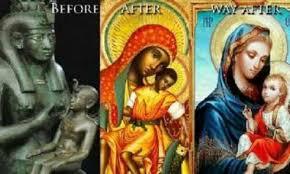
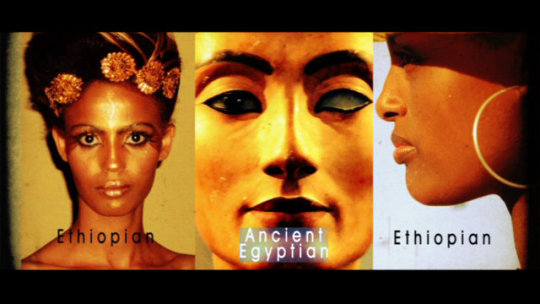



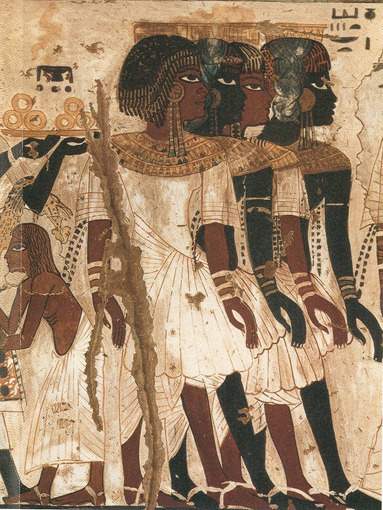
Hamites is the name formerly used for some North African peoples by Eurocentric anthropologists in the context of a now-outdated model of dividing humanity into different races favored by white supremacists.The term was originally borrowed from the Book of Genesis, where it is used for the descendants of Ham, son of Noah.
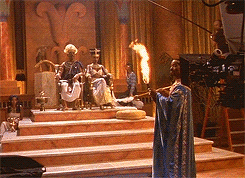
The term was originally used in contrast to the other two proposed divisions of mankind based on the story of Noah: Semites and Japhetites. The appellation Hamitic was applied to the Berber, Cushitic, and Egyptian branches of the Afroasiatic language family, which, together with the Semitic branch, was thus formerly labelled “Hamito-Semitic”.However, since the three Hamitic branches have not been shown to form an exclusive (monophyletic) phylogenetic unit of their own, separate from other Afroasiatic languages, linguists no longer use the term in this sense. Each of these branches is instead now regarded as an independent subgroup of the larger Afroasiatic family.

Beginning in the 19th century, scholars generally classified the Hamitic race as a subgroup of the Caucasian race, alongside the Aryan race and the Semitic thus grouping the non-Semitic populations native to North Africa and the Horn of Africa, including the Ancient Egyptians. According to the Hamitic theory, this “Hamitic race” was superior to or more advanced than the “Negroid” populations of Sub-Saharan Africa. In its most extreme form, in the writings of C. G. Seligman, this theory asserted that virtually all significant achievements in African history were the work of “Hamites”.
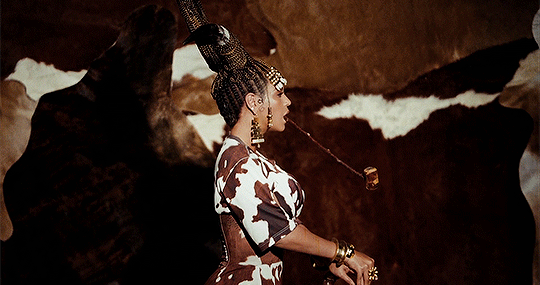
Since the 1960s the Hamitic hypothesis, along with other theories of “race science”, has become entirely discredited in science
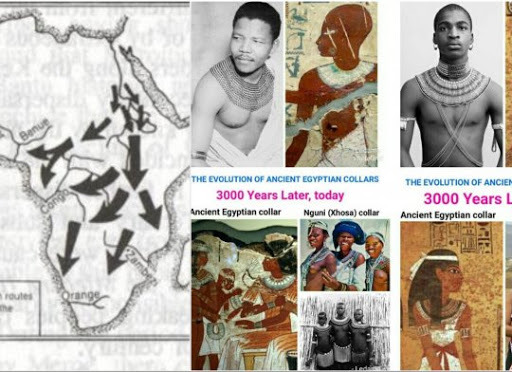
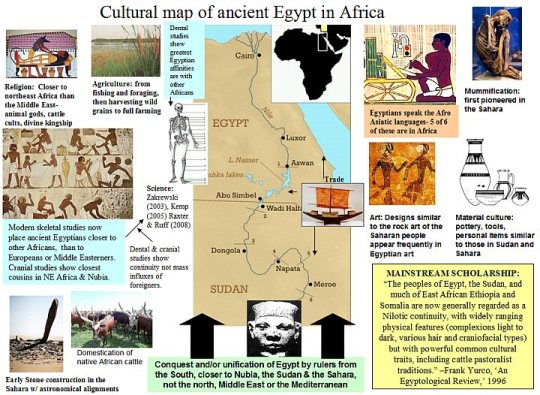
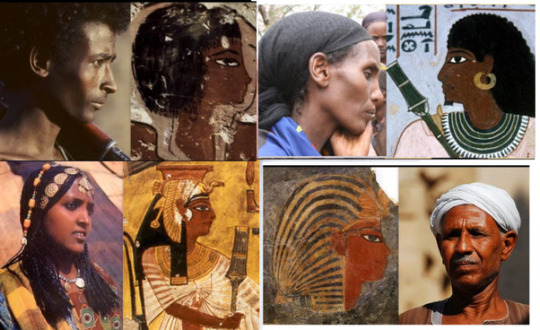
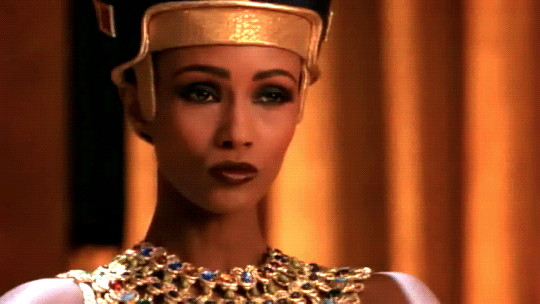
1K notes
·
View notes
Photo





N'Ko (N'Ko: ߒߞߏ) is a script devised by Solomana Kante in 1949, as a writing system for the Manding languages of West Africa.The term N'Ko, which means I say in all Manding languages, is also used for the Manding literary standard written in N'Ko script.
The script has a few similarities to the Arabic script, notably its direction (right-to-left) and the letters which are connected at the base. Unlike Arabic, it obligatorily marks both tone and vowels. N'Ko tones are marked as diacritics, in a similar manner to the marking of some vowels in Arabic.
History
Grave of Kanté Souleymane. The French at the bottom reads “Inventor of the N'Ko alphabet”.
Kante created N'Ko in response to what he felt were beliefs that Africans were a culture-less people, because before then, no indigenous African writing system for his language existed. N'Ko was invented in Bingerville, Côte d'Ivoire and then brought to Kante’s natal region of Kankan, Guinea before being disseminated into other Manding-speaking parts of West Africa. N'Ko Alphabet Day is April 14, relating to the date in 1949 when the script is believed to have been finalized.
The introduction of the script led to a movement promoting literacy in the N'Ko script among Manding speakers in both Anglophone and Francophone West Africa. N'Ko literacy was instrumental in shaping the Maninka cultural identity in Guinea, and it has also strengthened the Manding identity in other parts of West Africa.

Current use
As of 2005, it is used mainly in Guinea and the Ivory Coast (respectively by Maninka and Dyula speakers), with an active user community in Mali (by Bambara-speakers). Publications include a translation of the Quran, a variety of textbooks on subjects such as physics and geography, poetic and philosophical works, descriptions of traditional medicine, a dictionary, and several local newspapers. It has been classed as the most successful of the West African scripts.
N'Ko literature generally uses a literary language register, termed kangbe (literally, ‘clear language’), that is seen as a potential compromise dialect across Manding languages.For example, the word for ‘name’ in Bamanan is tɔgɔ and in Maninka it is tɔɔ. In written communication each person will write it one single way in N'Ko, and yet read and pronounce it as in their own language. This literary register is thus intended as a koiné language blending elements of the principal Manding languages, which are mutually intelligible, but has a very strong Maninka flavour.
There has also been documented use of N'Ko, with additional diacritics, for traditional religious publications in the Yoruba and Fon languages of Benin and southwestern Nigeria.

Letters
The N'Ko script is written from right to left, with letters being connected to one another
138 notes
·
View notes
Photo



INDIA’S RICH AFRICAN HISTORY EXTENDED FAR BEYOND SLAVERY & TRADE
The relationship between the continents of Africa and India has long been established, with some historians noting the presence of Africans in India around the 8th Century. Business trade of all sorts between Africa and India has been assumed to have taken place in even earlier times, and this profitable union still takes place today. The melding of the African-Indian relationship helped spawn new developments in music, religion, and trade among other forms of culture. Although there have been recent examinations of the slave trade and presence of Africans in India in recent times, there is still a dearth of conversations around how interconnected these two regions are by way of history. BBC News India recently took a deeper look at the link, revealing that many Africans arrived in India as traders or slaves but eventually became a vital cog in Indian society. In fact, some Africans even became powerful military minds and rulers across the Indian continent. Some of them, like Malik Ambar in Ahmadnagar (in western India), went on to become important rulers and military strategists. Ambar was known for taking on the powerful Mughal rulers of northern India. An exhibition, organised by the Schomburg Center for Research in Black Culture of The New York Public Library, in Delhi recently showcased such “forgotten” stories of Africa’s role in India’s history. Abyssinians, also known as Habshis in India, mostly came from the Horn of Africa to the subcontinent. Dr. Sylviane A Diouf of the Schomburg Center says Africans were successful in India because of their military prowess and administrative skills. “African men were employed in very specialised jobs, as soldiers, palace guards, or bodyguards; they were able to rise through the ranks becoming generals, admirals, and administrators,” she says. According to the Schomburg Center exhibit co-curator Kenneth Robbins, Africans were essential in protecting the rule of several Indian sultans and enacted their own dynasties. Mr. Robbins adds that there exists evidence that Africans came to India around the 4th Century but became far more prominent and established between the 14th Century and the 17th Century. Dr. Diouf also spoke of the African-ruled state of Sachin, which was established in 1791 in the state of Gujarat in India. It was a self-contained nation that featured its own currency and a state band of Africans. In 1948, Sachin was absorbed into Independent India. At its height, Sachin had a population of 26,000 that was comprised of mostly Hindu worshipers and a smaller population of Muslim followers. Dr. Diouf also added that individuals such as the aforementioned Ambar and their ethnicity have largely been erased from Indian history, although it hasn’t been determined if that was deliberate.
Ambar was of Ethiopian heritage, and Dr. Diouf questioned if the failure to preserve his heritage was an act of “historical erasure.” #afrakan #afrakan culture
503 notes
·
View notes
Photo
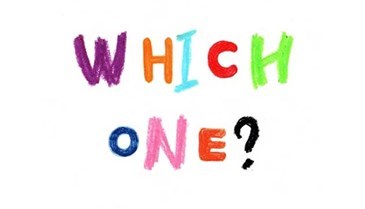
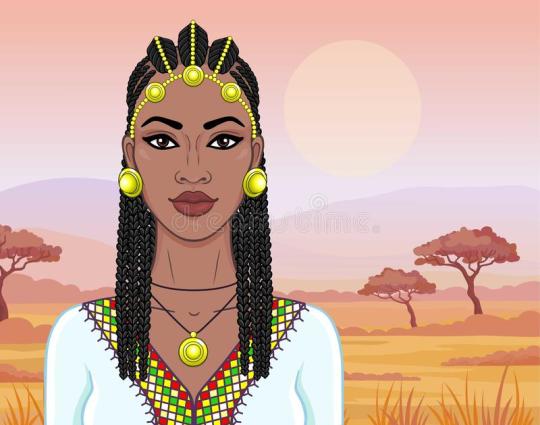
IS IT BLACK OR AFRICAN OR AFRICAN AMERICAN?
HAD A RECENT RUN IN WITH AN ASIAN PATIENT OF MINE. WHO ASKED ME, AFTER I STATED MY NAME. WHAT DO I CALL YOUR PEOPLE? I HEAR SOME PEOPLE SAY BLACK, THEN AFRICAN AMERICAN,COLORED, AND SOMETHING CALLED MELANATED BEINGS?
SO THE BIG QUESTION WHAT DO WE CALL OURSELVES? I AM CONFUSED.
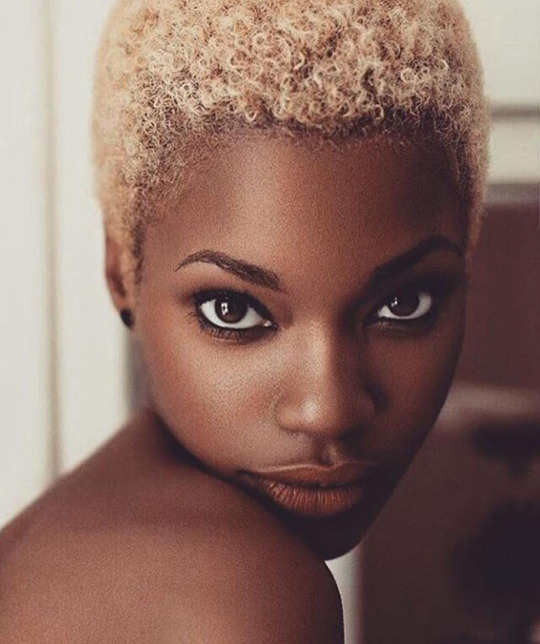
YOU MUST UNDERSTAND AFRICANS NEVER SPOKE ENGLISH
AFRICANS NEVER HAD A UNIFYING LANGUAGE
THE BASIS OF AFRICAN IDENTITY LET ALONE ALL IDENTITIES COMES FROM ETHNIC IDENTITY.
WHY WOULD AFRICANS BE MESMERIZED BY COLOR
REAL IDENTITIES ARE AUTONYMS, EXAMPLE AMAZULU IS A IDENTITY THAT THOSE GROUPS OF PPL WITH OUT FOREIGN INTERVENTION CAME UP WITH.
EUROPEANS NOR ASIAN CAME UP WITH THE TERM ZULU
THE TERM IFIRIYA OR AFRICA COMES FROM THE VARIOUS ETHNIC GROUPS FROM NORTH AFRICA
AFTER HANNIBAL WAS DEFEATED, SCIPIO NAMED HIS SELF AFTER THE LAND
ALSO AFRICA COMES FROM Massey, in 1881, stated that Africa is derived from the Egyptian af-rui-ka, meaning “to turn toward the opening of the Ka.” The Ka is the energetic double of every person and the “opening of the Ka” refers to a womb or birthplace. Africa would be, for the Egyptians, “the birthplace.”
WHEN WE SAY WE ARE AFRICAN WE ARE STATING OUR RAICAL ORIGINS. NOT A NATIONALITY

IS YOUR SKIN COLOR BLACK?
NO OUR SKIN IS NOT BLACK NOR DO ALL AFRICAN LOOK ALIKE OR MYOPIC
Human skin color ranges in variety from the darkest brown to the lightest hues. An individual’s skin pigmentation is the result of genetics, being the product of both of the individual’s biological parents’ genetic makeup, and exposure to sun. In evolution, skin pigmentation in human beings evolved by a process of natural selection primarily to regulate the amount of ultraviolet radiation penetrating the skin, controlling its biochemical effects
Black people refers to a racialized classification of people, usually a political and a skin color-based category for specific populations with a mid to dark brown complexion. Not all Black people have dark skin; in certain countries, often in socially based systems of racial classification in the Western world, the term “Black” is used to describe persons who are perceived as dark-skinned compared to other populations. It is mostly used for people of Sub-Saharan African descent and the indigenous peoples of Oceania. Indigenous African societies do not use the term Black as a racial identity outside of influences brought by Western cultures.
For some individuals, communities and countries, “Black” is perceived as a derogatory, outdated, reductive or otherwise unrepresentative label, and as a result is neither used nor defined, especially in African countries with little to no history of colonial racial segregation. Some have commented that labeling people “Black” is erroneous as the people described as “Black” are seen by some to have a brown skin color.

WHO CAME UP WITH THE IDEA TO CALL AFRICANS BLACK
AFTER THE BACONS REBELLION, WHEN EUROPEANS AND AFRICANS HAD A REVOLT, THAT DESTROYED PLANTATIONS
It was the first rebellion in the North American colonies in which discontented frontiersmen took part (a somewhat similar uprising in Maryland involving John Coode and Josias Fendall took place shortly afterwards). The alliance between European indentured servants and Africans (many enslaved until death or freed), united by their bond-servitude, disturbed the ruling class. The ruling class responded by hardening the racial caste of slavery in an attempt to divide the two races from subsequent united uprisings with the passage of the Virginia Slave Codes of 1705.While the farmers did not succeed in their initial goal of driving the Native Americans from Virginia, the rebellion resulted in Berkeley being recalled to England.
AFTER THE LEADER OF THE REBELLION DIED LAND OWNERS, REACHED OUT TO LAW MAKERS FROM LONDON CAME OVER FOR HELP AND TO BE ADVISED
FIRST THING THEY DID WAS BAN INTER RACIAL MARRIAGES
THEN THEY DECIDED THAT AFRICANS WOULD NEVER GET OUT OF SLAVERY.
THIS IS WHEN THE TERM WHITE AND BLACK WERE DEVELOPED. BLACK MEANING YOU HAVE NO RIGHTS, AND WHITE MEANS YOU DO HAVE RIGHTS
youtube
SO WHEN WAS THE MAJOR CHANGE
By that time, the majority of African people in the United States were native-born, so the use of the term “African” became problematic. Though initially a source of pride, many Africans feared that the use of African as an identity would be a hindrance to their fight for full citizenship in the US. They also felt that it would give ammunition to those who were advocating repatriating black people back to Africa. In 1835, black leaders called upon Black Americans to remove the title of “African” from their institutions and replace it with “Negro” or “Colored American”. A few institutions chose to keep their historic names, such as the African Methodist Episcopal Church. African Americans popularly used the terms “Negro” or “colored” for themselves until the late 1960s.

In 1988, the civil rights leader Jesse Jackson urged Americans to use instead the term “African American” because it had a historical cultural base and was a construction similar to terms used by European descendants, such as German American, Italian American, etc. Since then, African American and black have often had parallel status. However, controversy continues over which if any of the two terms is more appropriate. Maulana Karenga argues that the term African-American is more appropriate because it accurately articulates their geographical and historical origin.
Others have argued that “black” is a better term because “African” suggests foreignness, although Black Americans helped found the United States. Still others believe that the term black is inaccurate because African Americans have a variety of skin tones. Some surveys suggest that the majority of Black Americans have no preference for “African American” or “Black”,although they have a slight preference for “black” in personal settings and “African American” in more formal settings
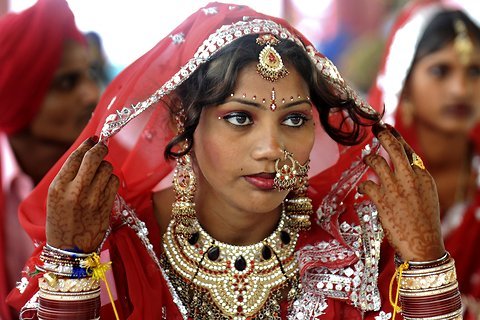
The United States is weird on labeling people. At one point all Europeans were not considered white, ironically at the same time Asians were considered to be white. They say white and black are skin colors, but at what point do we call Asians a myopic color. According to the United States Census, because I have North African ancestry, I am considered to be white.
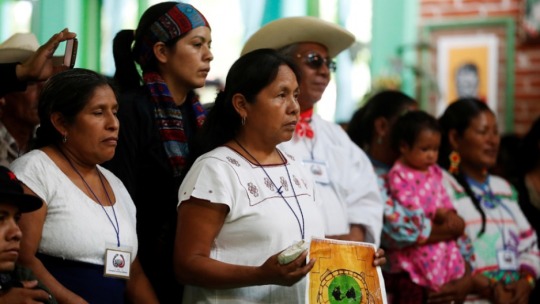
Are Mexicans white?
The official racial status of Mexican Americans has varied throughout American history. From 1850 to 1920, the U.S. Census form did not distinguish between whites and Mexican Americans. In 1930, the U.S. Census form asked for “color or race,” and census enumerators were instructed to write W for white and Mex for Mexican. In 1940 and 1950, the census reverted its decision and made Mexicans be classified as white again and thus the instructions were to “Report white (W) for Mexicans unless they were definitely of full Indigenous Indian or other non-white races (such as Black or Asian).”
.
During periods in U.S. history when racial intermarriage wasn’t legally acknowledged, and when Mexicans and Mexican-Americans were uniformly allotted white status, they were legally allowed to intermarry with what today are termed non-Hispanic whites, unlike Blacks and Asians. They were allowed to acquire U.S. citizenship upon arrival; served in all-white units during World War II; could vote and hold elected office in places such as Texas, especially San Antonio; ran the state politics and constituted most of the elite of New Mexico since colonial times; and went to segregated white schools in Central Texas and Los Angeles. Additionally, Asians were barred from marrying Mexican Americans because Mexicans were legally white.
U.S. nativists in the late 1920s and 1930s (mostly due to the socially xenophobic and economic climate of the Great Depression) tried to put a halt to Mexican immigration by having Mexicans (and Mexican Americans) declared non-white, by virtue of their Indian heritage. After 70 years of being in the United States and having been bestowed white status by the U.S. government this was the first time the United States began to show true racist attitudes towards Mexicans in America something that usually came quickly to people of other races. They based their strategy on a 1924 law that barred entry to immigrants who were ineligible for citizenship, and at that point, only blacks and whites, and not Asians or Native Americans, could naturalize and become U.S. citizens. The test case came in December 1935, when a Buffalo, N.Y., judge rejected Jalisco native Timoteo Andrade’s application for citizenship on the grounds that he was a “Mexican Indian.” Had it not been for the intervention of the Mexican and American governments, who forced a second hearing, this precedent could very well have made many Mexicans, the majority of whom are mestizo, ineligible for citizenship. When mixed race Mexicans were allowed to retain their white status in American society they were unperturbed with the fact that the United States still continued its discriminatory practices towards Mexicans of full Indigenous heritage.
During the Great Depression, Mexicans were largely considered non-white. As many as 400,000 Mexicans and Mexican Americans were deported in a decade-long effort by the government called the Mexican Repatriation.
In the 2000 U.S census, around half of all persons of Mexican or Mexican American origin in the U.S. checked white to register their race (in addition to stating their Mexican national origin).Mexican Americans are the largest white Hispanic group in the United States.

The idea of color is a European colonial disease not an African one.
African is a racial origins term
Saying your Jamaican,Nigerian,Ethiopian,Canadian,Mexican, or Brazilian are Nations/Nationality
Saying Amhara, Sicilian, Irish, Yoruba, Zulu, or Han are examples of Ethnicities
African American is not an ethnic group but clusters of different ethnics from Africa in the Americas.
Black is nothing more than a class system designed by Europeans

Just because your born in Germany doesn’t change your race.
When do Asian people stop being racially Asian just because they moved to a different nation
So, why does this happens to Europeans or Africans
There is no such things as a black language, skin color, or names or even a black or nation called black
3K notes
·
View notes
Text
some things i’ve learned while studying in quarantine
drink more water instead of more coffee.
weekly goals are bullshit. set yourself 3-day goals. you’ll be less laid-back.
don’t just mindlessly stare at words. before you start studying, know your approach to it. have a plan.
summarizing the concept in your own words is the key part of taking notes. don’t just copy things down, convert them into your own way of talking, your own vocabulary, no matter how dumb and unprofessional it sounds.
don’t let the “studyblr aesthetic” fool you. studying doesn’t have to be pretty. summaries and notes can be messy as long as they’re comprehensible. you can always rewrite and reorganize them later. (honestly, you better do. and you better keep them.)
don’t throw away the papers you’ve solved your problems in. staple them to the fucking textbook. you need to see them constantly. cause you’ll need reminders of how far you’ve came, when you’re feeling discouraged.
don’t be an armchair analyst for your issues. if you have an idea then act on it.
remember: the exact point where it becomes difficult, is where your growth begins. take a deep breath, and try to focus on the paragraph in front of you.
get off your high horse and understand that if you’re a zero, you won’t go to 100 in a couple of days. first, you’ll need to reach 30, then from 30 to 60, and then from 60 to 90. nobody is 100 everyday. that happens very rarely.
you need to have fun everyday. you need to have peaceful time every single day. even on exam night. especially on exam night, actually. so make sure you’ve studied enough so you can have some time to yourself.
once you’re on a roll and in need of some challenge to stay on track, start writing down your studying hours. tell yourself you’re not allowed to do less than 80% of what you did yesterday. whatever the hell it was, even just one hour. so if yesterday you really studied for like, say 8 hours, today your goal is to study for at least 6 and a half hours. if you can’t keep up with that, make it 70%, or 60%.
be forgiving of yourself. be kind to yourself. even if you bounced back and lost your streak. start again. as slowly as you did before. take your time. it’s okay, you were there once you can get there again.
41K notes
·
View notes
Text
some things i’ve learned while studying in quarantine
drink more water instead of more coffee.
weekly goals are bullshit. set yourself 3-day goals. you’ll be less laid-back.
don’t just mindlessly stare at words. before you start studying, know your approach to it. have a plan.
summarizing the concept in your own words is the key part of taking notes. don’t just copy things down, convert them into your own way of talking, your own vocabulary, no matter how dumb and unprofessional it sounds.
don’t let the “studyblr aesthetic” fool you. studying doesn’t have to be pretty. summaries and notes can be messy as long as they’re comprehensible. you can always rewrite and reorganize them later. (honestly, you better do. and you better keep them.)
don’t throw away the papers you’ve solved your problems in. staple them to the fucking textbook. you need to see them constantly. cause you’ll need reminders of how far you’ve came, when you’re feeling discouraged.
don’t be an armchair analyst for your issues. if you have an idea then act on it.
remember: the exact point where it becomes difficult, is where your growth begins. take a deep breath, and try to focus on the paragraph in front of you.
get off your high horse and understand that if you’re a zero, you won’t go to 100 in a couple of days. first, you’ll need to reach 30, then from 30 to 60, and then from 60 to 90. nobody is 100 everyday. that happens very rarely.
you need to have fun everyday. you need to have peaceful time every single day. even on exam night. especially on exam night, actually. so make sure you’ve studied enough so you can have some time to yourself.
once you’re on a roll and in need of some challenge to stay on track, start writing down your studying hours. tell yourself you’re not allowed to do less than 80% of what you did yesterday. whatever the hell it was, even just one hour. so if yesterday you really studied for like, say 8 hours, today your goal is to study for at least 6 and a half hours. if you can’t keep up with that, make it 70%, or 60%.
be forgiving of yourself. be kind to yourself. even if you bounced back and lost your streak. start again. as slowly as you did before. take your time. it’s okay, you were there once you can get there again.
41K notes
·
View notes
Photo








Aurélien Aumond Captures A Neo-Futurist Amusement Park
French photographer Aurélien Aumond has captured ‘Futuroscope’, a neo-futurist amusement park in the town of Poitiers that was designed and built in the ’80s.
The construction of the park was overseen by architect Denis Laming, a man credited as the initiator of the neo-futurist revival in architecture. Laming’s work moved away from post-modernism, representing instead a hope for a better future through the integration of technology with daily life. Aumond’s rendering of ‘Futuroscope’ removes Laming’s buildings from all context. Set amongst the perfect lawns the elements of the amusement park seem at odds with their surroundings—as if they have been rendered there by hand after the original photo was taken. Laming’s angular buildings seem alien against the natural landscape. The aim of the series, Aumond explains, is to question whether such neo-futuristic architecture is still relevant—has it failed to represent the future; or does it continue to act as a repository for our hopes for times to come?
3K notes
·
View notes
Photo

Kenye naweza najua Hii Kazi nafanya kutua #stillness #newmusic #musiclife #ipreview (at My Happy Place) https://www.instagram.com/p/CCGXGQ3FWBV/?igshid=1wph51p0r1ymx
0 notes
Video
instagram
Afitra Type Beats ||| More on this series, as I try communicate using the bass 808s and Pads https://www.instagram.com/p/CCBbt8vFZRp/?igshid=1rusalouqxnzh
0 notes
Video
A toast to everyone living their best. 'Form Nikujitambua' - Y9A & CHozen'Afitra, off the 'UHAI' EP with @y9a_y9a. Link available in bio if you haven't gotten a chance to listen to the project (at My Happy Place) https://www.instagram.com/p/CBlYB7xF03D/?igshid=1h0f1yhcn6ok7
1 note
·
View note
Photo

Conversations with @kj.karuga laying out our next moves. Part 1 of the 'Extra' series, off the UHAI album, check out the link in bio to get the convo. 🕵️♀️: @cate_toni (at Feel at home) https://www.instagram.com/p/CBdtihYFSlf/?igshid=u1e2ck8u2fjq
0 notes
